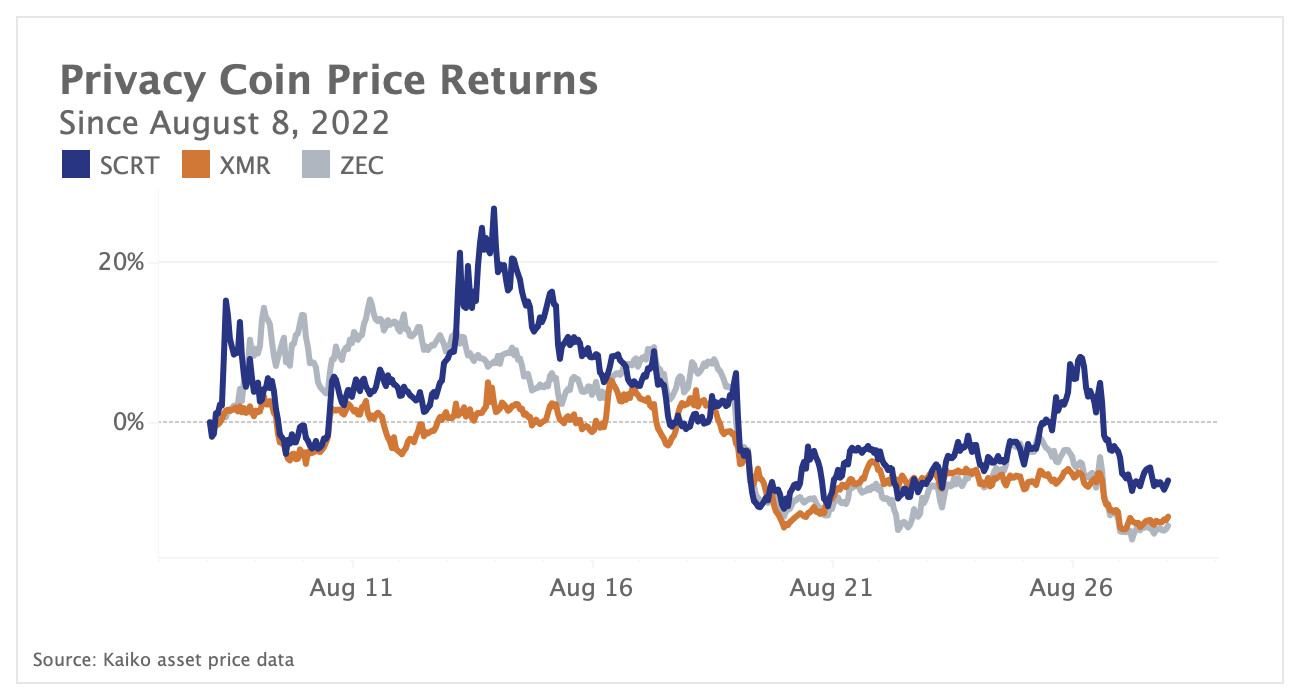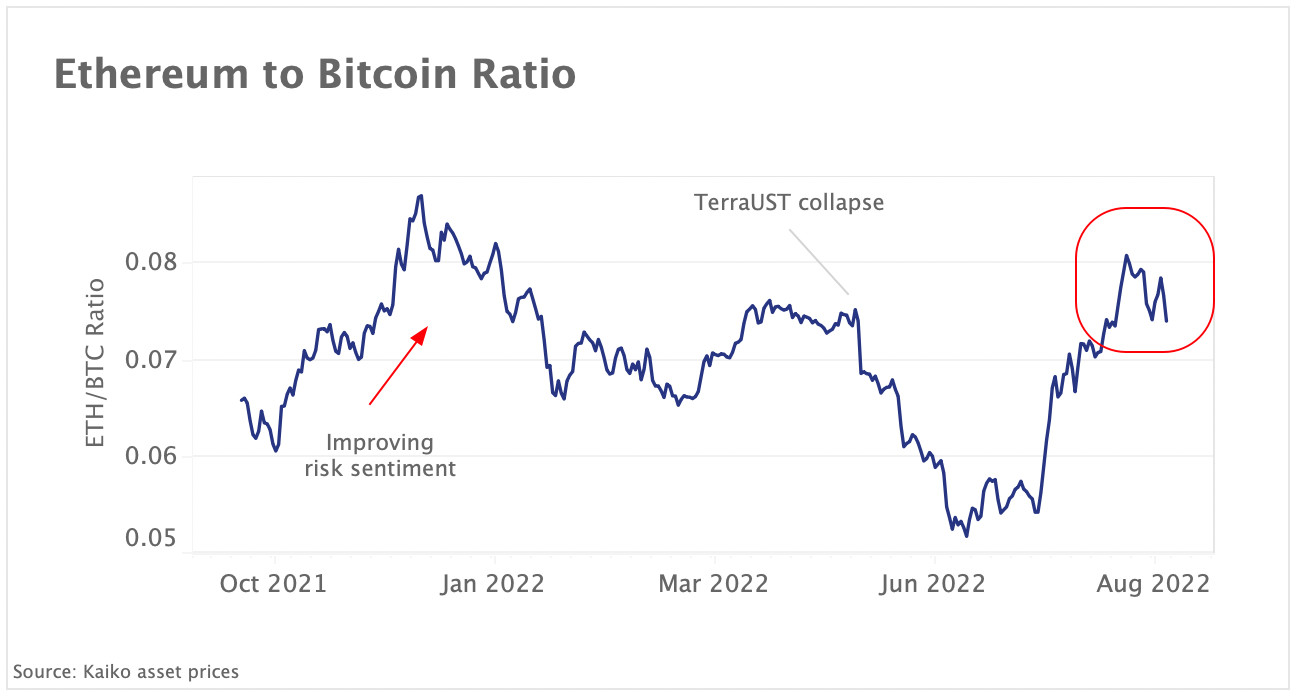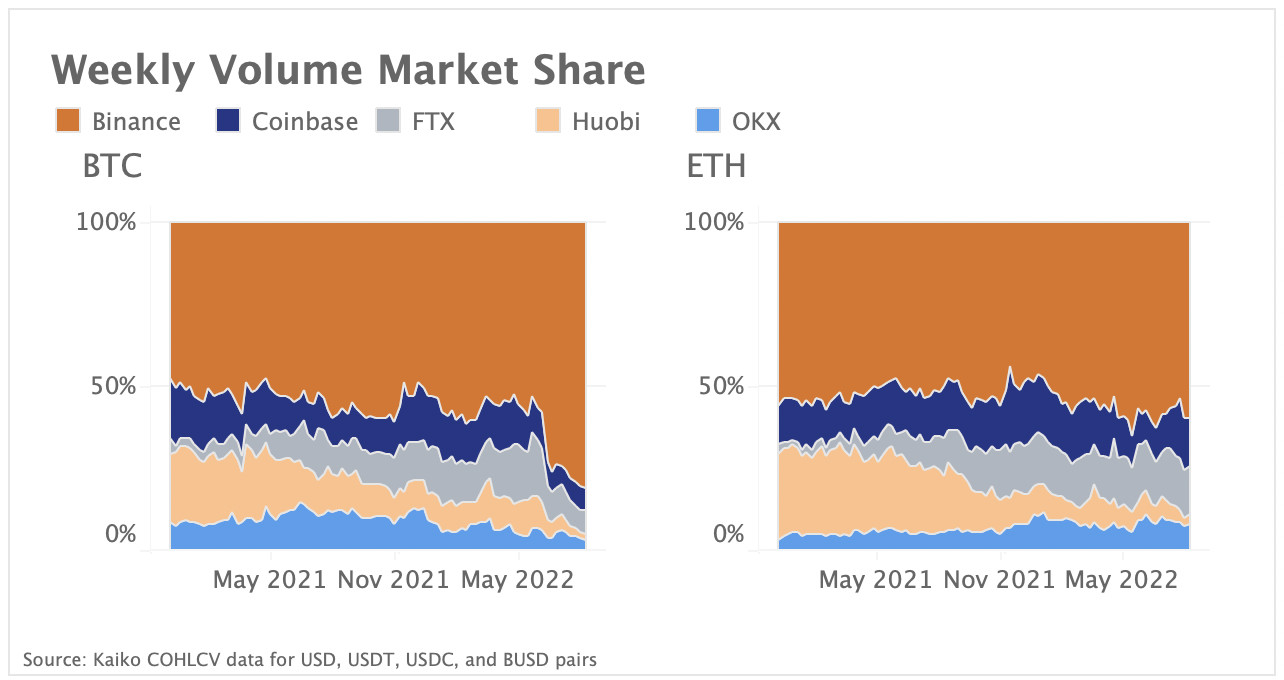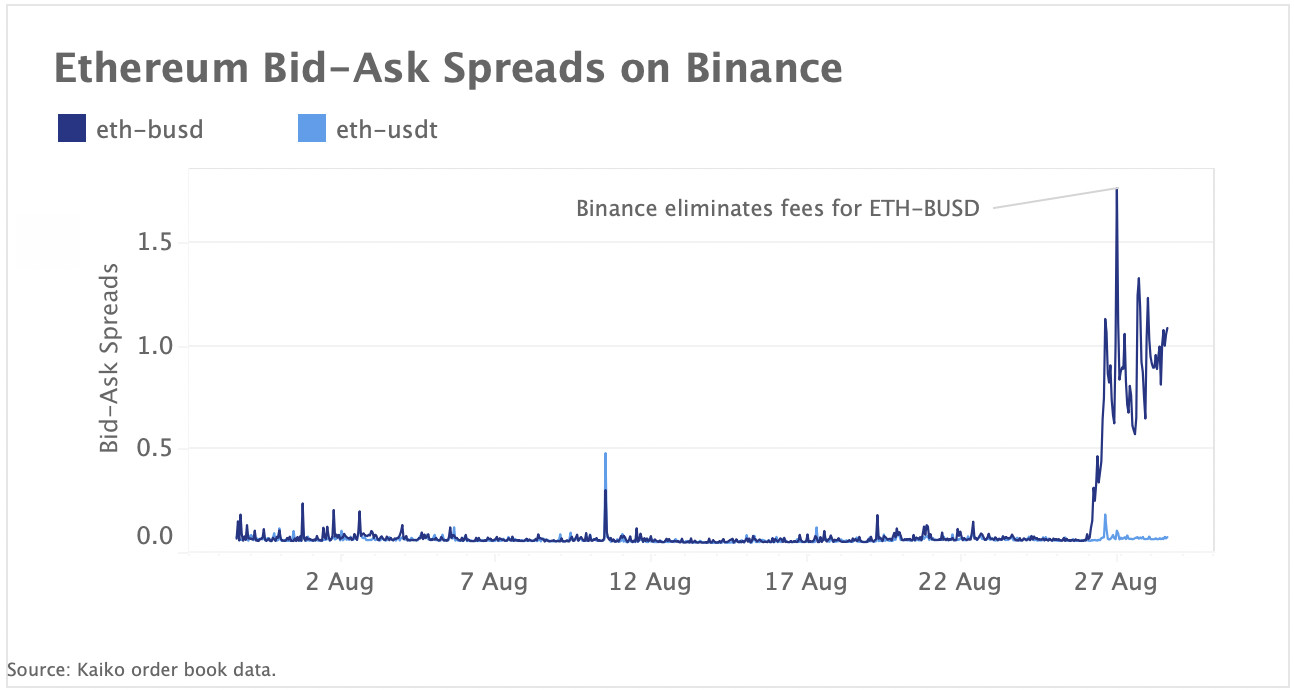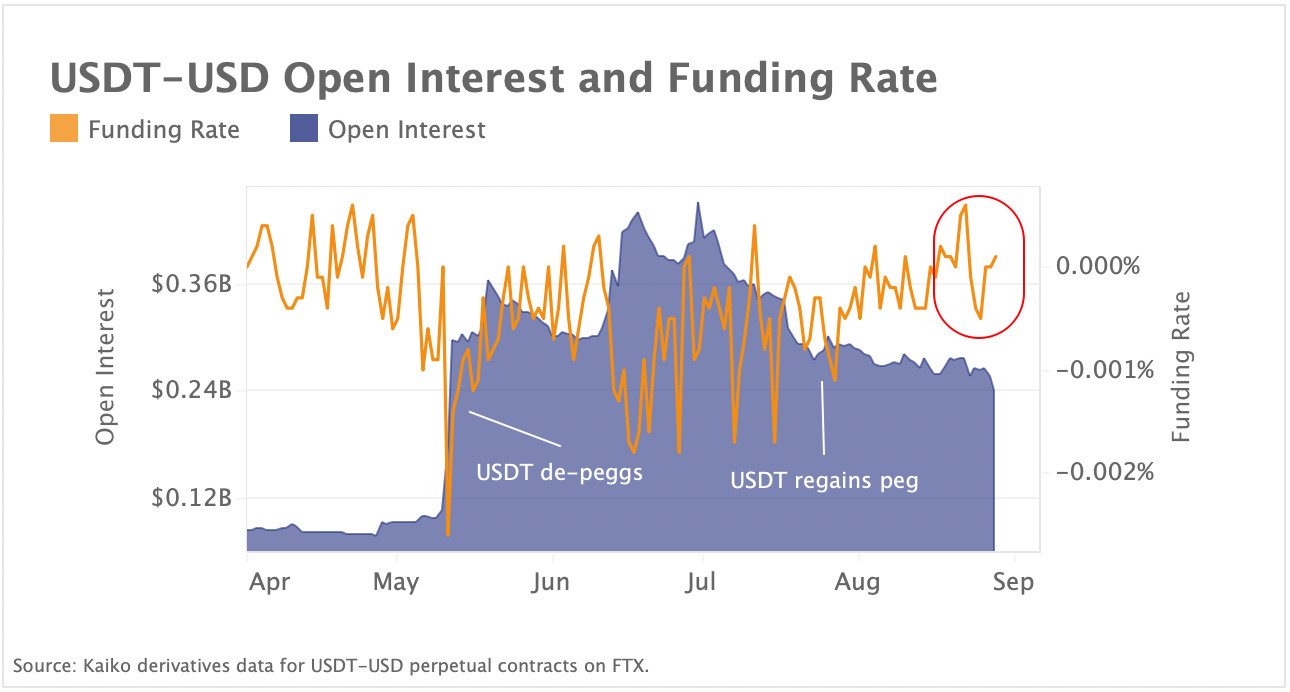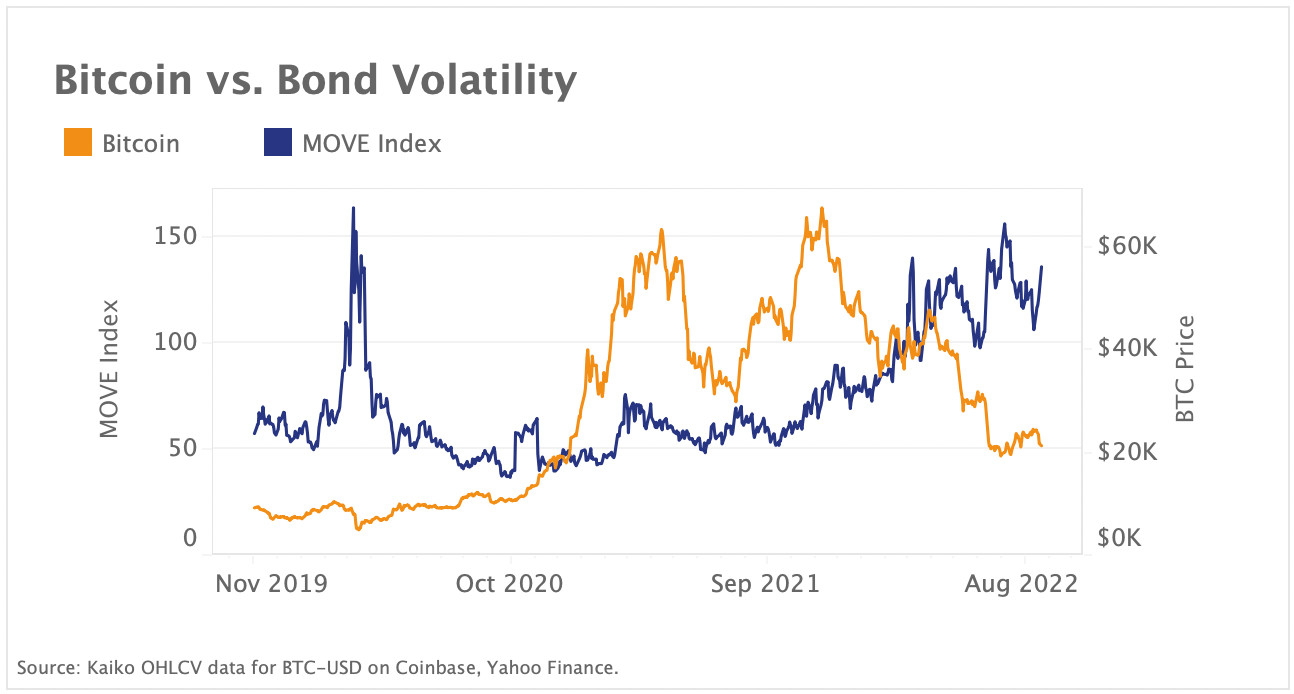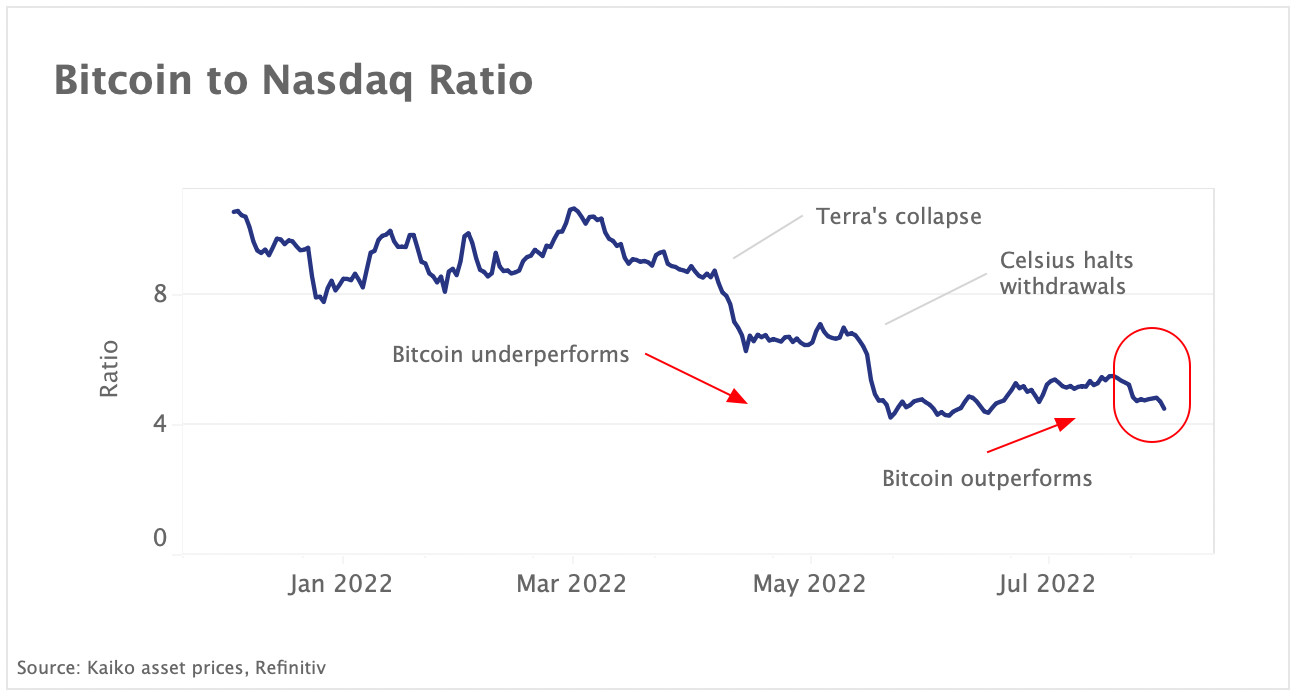A summarizing review of what has been happening at the crypto markets of the past week. A look at trending sectors, liquidity, volatility, spreads and more. The weekly report in cooperation with market data provider Kaiko.
The last 7 days in cryptocurrency markets:
- Price Movements: Bitcoin dropped below $20k for the first time since mid-July following a hawkish Fed speech that roiled equity markets.
- Market Liquidity: Binance's BTC market share hit a new high nearly two months after it eliminated trading fees.
- Derivatives: USDT-USD perpetual futures funding rates have steadily risen over the past month, suggesting a drop in bearish bets for the stablecoin.
- Macro Trends: Bitcoin has underperformed the Nasdaq 100 since the start of 2022.
Markets Tumble Following Hawkish Fed Comments
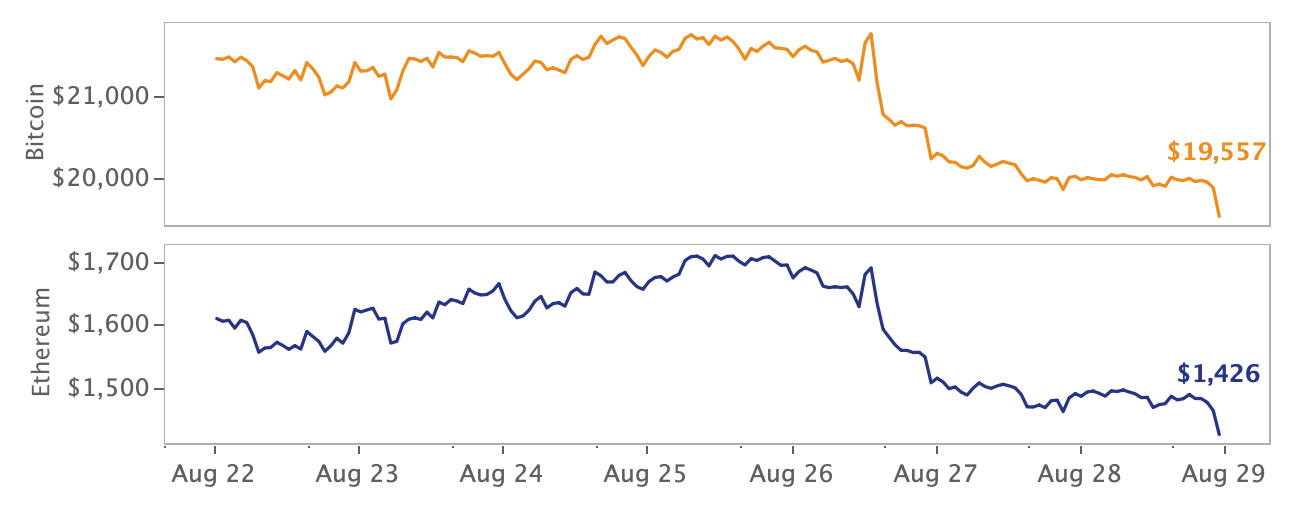
For the first time since July 14th, Bitcoin (BTC) dipped below the dreaded $20k level of support following an unexpectedly hawkish statement from the Fed about its intentions to continue raising interest rates to combat high inflation. Ethereum (ETH) also dipped below the key $1.5k support level, and most crypto assets are down double digits for the week. It appears that the brief market respite is behind us, replaced by growing anxiety around a tough macro environment and the continuing fallout around Tornado Cash sanctions. Last week, Tether announced that they would not freeze addresses associated with the mixing service, contrasting its counterpart Circle, which blacklisted 38 Ethereum addresses. With Ethereum's upcoming migration to proof-of-stake (PoS), the realities of sanctions and block-level censorship have generated debate around the future of decentralization and permissionless transactions.
Privacy coins perform in line with the broader market since Tornado Cash sanctions
The U.S. Treasury’s sanction of Ethereum addresses related to Tornado Cash once again brought privacy and censorship into the conversation. Despite this, three of the top privacy-related tokens – Monero (XMR), Zcash (ZEC), and Secret Network (SCRT) – have moved in line with the broader market. Monero is the oldest of the bunch, launched in 2014, while Zcash launched in 2016. Both are styled as digital currencies (like Bitcoin), while Secret Network is a smart contract platform (like Ethereum) that launched in 2020. Since August 8, 2022, ZEC and XMR are each down about 12% (BTC and ETH are down about 13%), while SCRT is down 7%. Since the start of the year, XMR has outperformed, and is down 37% while ZEC is down nearly 60% (BTC and ETH are also down about 60%) while SCRT has struggled and is down over 75%.
Ether's outperformance has stalled
From June to early August, ETH underwent a major surge in value relative to broader crypto markets, buoyed by enthusiasm around the upcoming merge and a market-wide improvement in sentiment. The ETH-BTC ratio increased at one of its fastest paces ever, climbing from 0.05 to 0.08. However, since the sanctions on Tornado Cash and corresponding swirl of questions around how this affects Ethereum's new proof-of-stake validation system, ETH's momentum has slowed considerably and the ratio has reversed. In the long term, the upcoming merge should be a major tailwind for ether as it is expected to reduce the issued supply, improve energy efficiency and lay the foundation for more scalability in the future.
Binance’s market share hits new high
Binance again made news last week by announcing that it would eliminate fees for ETH-BUSD trading starting on August 26, following its elimination of BTC trading fees in early July. Its move to eliminate BTC fees caused a surge in market share of volume from 57% to over 80% today. Its current market share of ETH volume is 59%, close to its 56% share at the beginning of 2021. We would expect to see this market share increase in the coming weeks, as ETH-BUSD trade volumes hit an all time high of $4.2bn immediately after the move. FTX’s BTC market share shrunk from 16% at the end of June to 7% now; Coinbase is down from 11% to 7%.
Looking at ETH, Coinbase and Binance have been relatively static, while FTX’s market share has grown at the expense of Huobi, which decreased from 26% in early 2021 to just 7% now, while FTX has grown from 3% to 15%. Overall, both BTC and ETH trade volumes have been on a steady downward trend since November boosting competition between exchanges. While Binance's fee elimination triggered a surge in trade volumes, it has caused liquidity to deteriorate as measured by the bid-ask spread.
ETH-BUSD spreads widened sharply on Friday, jumping from 0.06bps to 1.76bps, well above spreads for ETH-USDT pairs, which still have fees. We observed a similar trend on BTC markets after Binance eliminated fees and excluded the BTC pairs from its spot liquidity provider and VIP programs to limit wash trading incentives. The reason for this is likely increased costs for market makers as the programs offer various advantages including reduced market makers’ fees, BNB fee discounts, and higher withdrawal limits.
Funding rates on USDT-USD contracts turn positive
Funding rates on USDT-USD perpetual futures contracts turned positive last week after Tether declared it will not unilaterally blacklist Tornado Cash transactions, adopting a different approach from its main competitor Circle, which froze 38 Tornado-linked Ethereum addresses on Aug 8. The funding rate is the mechanism that pegs the perpetual future contract price to the price of the underlying asset. Positive funding rates suggest that perpetual swaps prices are higher than the index price as more traders are entering long positions.
The loss of confidence following Terra’s collapse prompted over $16bn outflows in Q2 from USDT which traded at a discount to the USD on spot markets for 68 days. USDT-USD perpetual futures contracts open interest surged four-fold between May 9th to May 20th, climbing from $0.1bn to $0.4bn while funding rates turned deeply negative, an indicator that the majority of positions were short. Funding rates have been mostly positive in August, hitting their highest level since April, despite the recent market selloff.
Monetary policy uncertainty weighs on BTC's 2022 returns
Last week, another round of hawkish comments by global central bankers after the Fed’s annual Jackson Hole symposium injected fresh volatility into the market. Risk assets sold off for a second week in a row as bets for another super-sized rate hike in September and “higher interest rates for longer” increased. Monetary policy uncertainty and growing recession fears have boosted bonds markets volatility over the past months. The MOVE Index - a forward-looking measure of options markets expectation for US bonds volatility, has surged by 46% YTD. It remains twice as high as the 2021 average, despite retreating from a yearly high of 156 in July.
Bitcoin has been moving in the opposite direction, losing 58% of its value YTD. Volatility is unlikely to go away in the coming months as the Fed is preparing to step up the process of shrinking its massive $9tn balance sheet or the so-called quantitative tightening (QT) in September. Together with rising interest rates (up by 150bps so far this year) and a data-driven approach to monetary policy, this will likely put additional pressure on risk assets. Meanwhile, bitcoin’s rising correlation with the tech-heavy Nasdaq 100 since November has been mirrored by falling relative performance.
The BTC to Nasdaq ratio has been declining since the start of the year. This suggests that BTC is clearly perceived as a riskier asset. However, while macro headwinds remain a larger scale driver of BTC’s price action, the Terra collapse and Celsius halting withdrawals have exacerbated its downturn.


